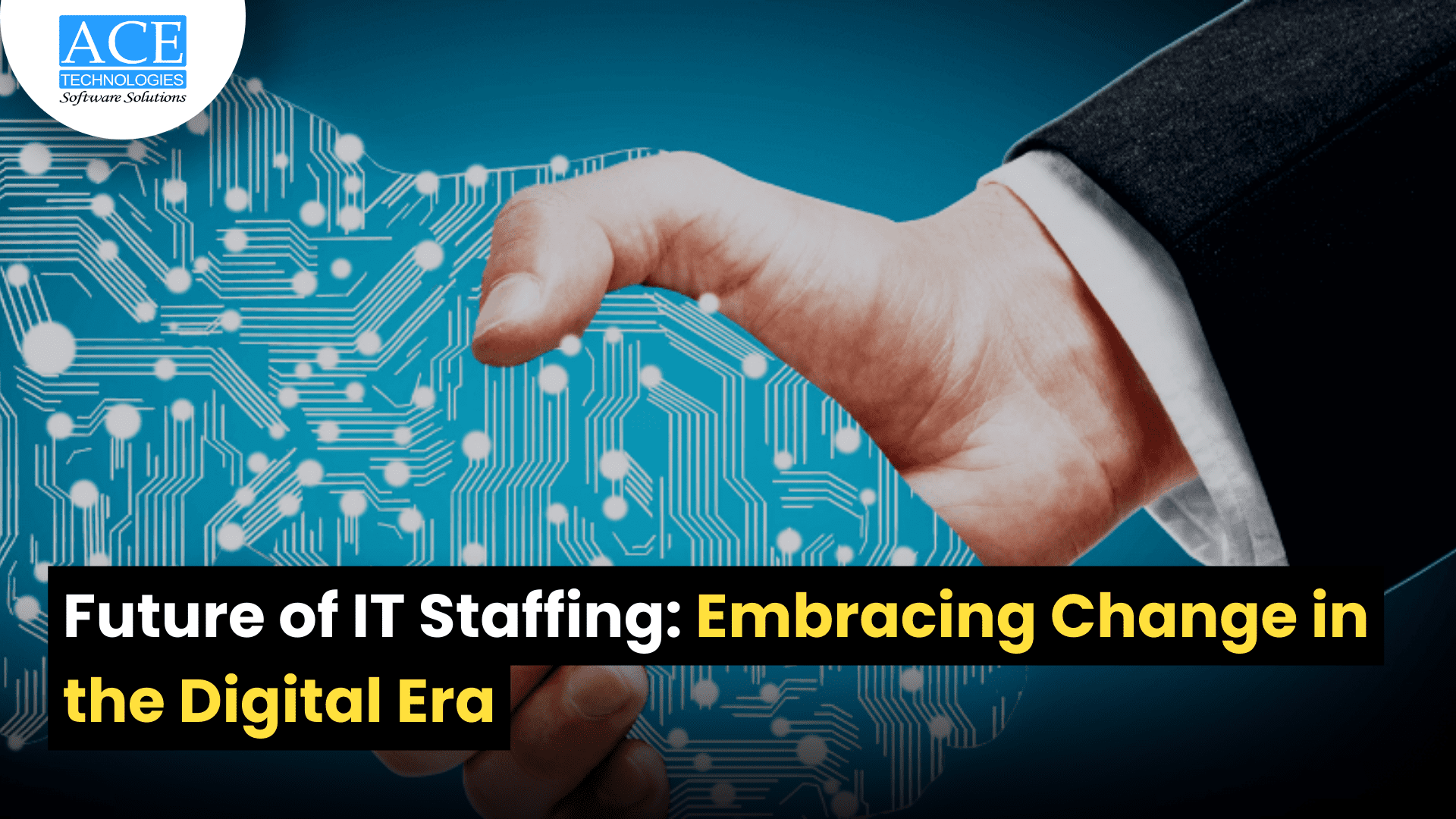The future of IT staffing is undergoing a transformative shift, driven by advancements in technology and changing workforce dynamics.
What is IT Staffing?
IT staffing refers to the process of hiring and managing a workforce specialized in information technology. It plays a critical role in ensuring organizations have the right talent to drive innovation and maintain technological infrastructure.
Importance of IT Staffing
Efficient IT staffing is vital for businesses to remain competitive in today’s digital landscape. It enables companies to access specialized skills and expertise, driving growth and innovation.
Remote Developers
The rise of hiring remote developers is reshaping the way companies approach talent acquisition and workforce management.
Benefits of Hiring Remote Developers
- Global Talent Pool: Remote hiring allows businesses to tap into a diverse talent pool spanning across geographical boundaries.
- Cost Savings: Remote work often translates to lower overhead costs associated with office space and infrastructure.
- Flexibility: Remote developers enjoy the flexibility to work according to their schedules, leading to increased productivity and job satisfaction.
Challenges of Hiring Remote Developers
- Communication Barriers: Remote teams may face challenges in effective communication, leading to misunderstandings and delays.
- Cultural Differences: Bridging cultural gaps among team members from diverse backgrounds requires proactive efforts.
- Time Zone Disparities: Coordination across different time zones can pose logistical challenges, impacting project timelines.
Offshore Developers
Offshore development offers companies access to specialized skills and cost-efficient solutions.
Advantages of Hiring Offshore Developers
- Cost Efficiency: Offshore development can result in significant cost savings, especially for labor-intensive projects.
- Scalability: Companies can quickly scale their development teams up or down based on project requirements.
- Access to Specialized Skills: Offshore teams often possess niche skills and expertise that may be scarce locally.
Limitations of Hiring Offshore Developers
- Cultural and Language Barriers: Differences in language and work culture may lead to miscommunication and inefficiencies.
- Time Zone Misalignment: Misaligned work hours can hinder real-time collaboration and decision-making.
- Data Security Concerns: Offshoring sensitive projects may raise concerns about data privacy and intellectual property protection.
Differentiating Remote Development and Offshore Development
In the realm of IT staffing, both remote development and offshore development offer alternative solutions to traditional in-house hiring. While they share similarities in terms of leveraging talent beyond local borders, there are distinct differences between the two approaches.
Remote Development
Remote development involves hiring professionals who work from locations outside the company’s physical office space. These individuals may be located in the same country or across different continents, but they work independently or as part of a distributed team.
Characteristics of Remote Development:
- Flexibility: Remote developers have the flexibility to work from anywhere, as long as they have a reliable internet connection. This flexibility allows companies to access a diverse talent pool without being limited by geographical boundaries.
- Communication Tools: Remote development relies heavily on communication tools such as video conferencing, instant messaging, and collaboration platforms to facilitate virtual interactions. These tools help bridge the gap between team members located in different locations.
- Individual Accountability: Remote developers often work autonomously, managing their tasks and deadlines independently. This requires a high level of self-discipline and accountability to ensure project deliverables are met.
Offshore Development
Offshore development involves outsourcing software development tasks to teams located in different countries, typically in regions known for cost-effective labor markets.
Characteristics of Offshore Development:
- Cost Efficiency: Offshore development offers cost savings due to lower labor costs in certain regions. Companies can leverage this advantage to access specialized skills and expertise at a fraction of the cost compared to hiring locally.
- Time Zone Differences: Offshore development teams may operate in different time zones, which can impact communication and collaboration. However, companies can also use time zone differences to their advantage by enabling round-the-clock development cycles.
- Cultural Considerations: Offshore development requires navigating cultural differences, including language barriers, work norms, and business practices. Building cultural awareness and fostering effective cross-cultural communication are essential for successful collaboration.
Key Differences
- Location of Talent: Remote development allows companies to hire talent from anywhere in the world, while offshore development specifically involves outsourcing tasks to teams located in other countries.
- Work Arrangement: Remote developers typically work independently or as part of distributed teams, whereas offshore development involves working with a dedicated team based in a specific offshore location.
- Communication Dynamics: Remote development relies heavily on virtual communication tools to facilitate collaboration, while offshore development may involve face-to-face interactions during project kick-off meetings or periodic visits to the offshore location.
- Cultural Integration: Remote development teams may have a more diverse composition, whereas offshore development teams often share a common cultural background based on their geographic location.
In summary, while both remote development and offshore development offer valuable alternatives to traditional in-house hiring, companies should carefully consider their specific needs, budget constraints, and project requirements when choosing between the two approaches. Whether opting for remote or offshore development, effective communication, cultural sensitivity, and clear expectations are key to fostering successful collaboration and achieving project success.
Trends in IT Staffing
The future of IT staffing is shaped by technological innovations and evolving market trends.
Technological Innovations in Staffing
- Artificial Intelligence: AI-driven tools streamline the recruitment process and enhance candidate assessment.
- Augmented Reality: AR-based solutions facilitate virtual interviews and onboarding processes, improving the candidate experience.
- Data Analytics: Advanced analytics enable predictive modeling for workforce planning and talent acquisition.
Market Trends and Predictions
- Gig Economy: The rise of freelancing and contract-based work arrangements is reshaping traditional employment models.
- Remote Work: Remote work is becoming the new norm, with companies embracing distributed teams to enhance agility and flexibility.
Future Prospects
As technology continues to evolve, the future of IT staffing presents both opportunities and challenges.
The Impact of AI and Automation
AI and automation are revolutionizing traditional job roles, leading to the emergence of new career paths such as AI ethics specialists and automation architects.
Emerging Job Roles and Skills
In-demand skills for future IT roles include proficiency in emerging technologies such as artificial intelligence, cloud computing, cybersecurity, and data science.
Adapting to Change
To thrive in the ever-evolving IT landscape, businesses need to adapt proactively to emerging trends and challenges.
Strategies for Companies
- Invest in Continuous Learning: Encourage employees to upskill and reskill to stay relevant in a rapidly changing tech ecosystem.
- Foster Innovation Culture: Create an environment that fosters creativity and encourages experimentation to drive innovation.
- Embrace Agile Methodologies: Adopt agile frameworks to enhance responsiveness and adaptability in project execution.
Skill Development for Professionals
IT professionals should prioritize developing soft skills such as communication, collaboration, and adaptability alongside technical expertise.
FAQs
Q: How will AI affect IT staffing?
A: Artificial intelligence is expected to streamline the recruitment process, automate repetitive tasks, and augment decision-making in IT staffing.
Q: What are the risks of hiring offshore developers?
A: Offshoring may pose challenges related to communication barriers, cultural differences, and data security concerns.
Q: How can companies overcome remote work challenges?
A: Companies can overcome remote work challenges by investing in communication tools, fostering a culture of trust, and establishing clear expectations.
Q: What are the key skills needed for future IT roles?
A: Future IT roles require proficiency in emerging technologies such as artificial intelligence, cloud computing, cybersecurity, and data science.
Q: Is IT staffing becoming more specialized?
A: Yes, IT staffing is becoming increasingly specialized, with demand growing for niche skills in areas such as cybersecurity, AI, and data analytics.
Q: How can businesses stay competitive in the changing IT landscape?
A: Businesses can stay competitive by embracing digital transformation, fostering a culture of innovation, and investing in talent development.
Conclusion
The future of IT staffing presents exciting opportunities for businesses and professionals willing to adapt and innovate. By embracing change and leveraging emerging technologies, organizations can build resilient and future-ready teams to navigate the digital era successfully.



